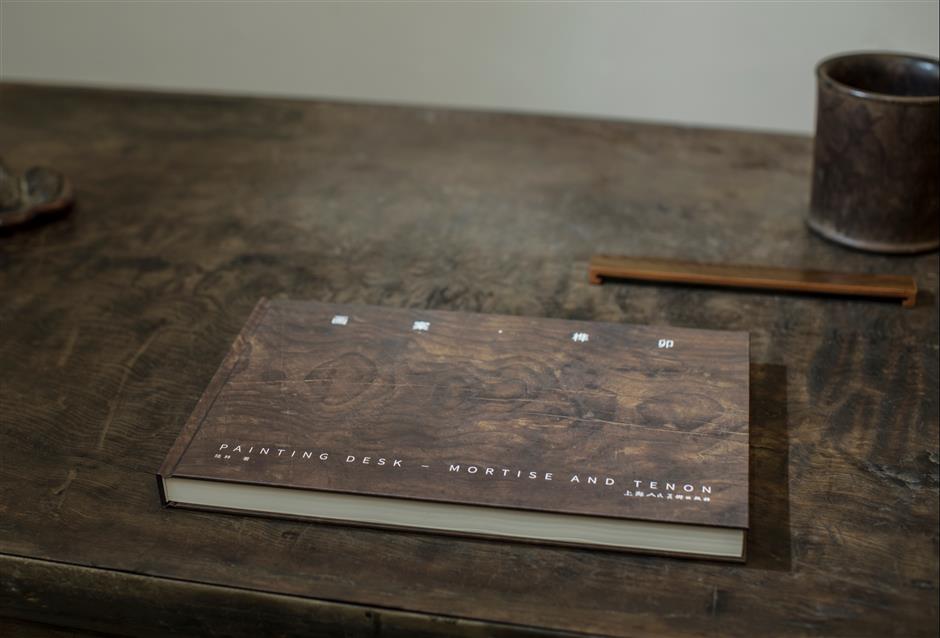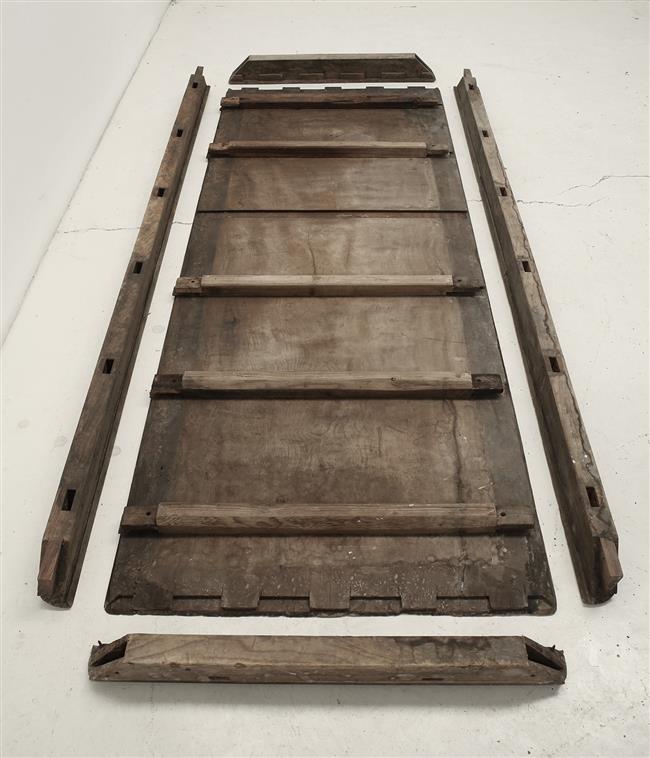The perfect joint: mortise and tenon

Private collector Lu Lin
From a carpenter who repaired Ming Dynasty furniture to a private collector, Lu Lin has traveled far.
Now, in a bilingual book “Painting Desk — Mortise and Tenon,” which was published by Shanghai People’s Fine Arts Publishing House, Lu reflects on his love for Ming Dynasty (1368-1644) furniture. The book illustrates the details and interpretation of mortise-and-tenon technique that was used in Ming furniture.
In the book, Lu dissembles and then assembles 27 components that make a painting desk, taking note and photos and revealing the mysteries and gadgets hidden in its structure.
“The special mortise-and-tenon joint that is used in this painting desk is rarely found in big piece of Ming furniture,” he says. “I was impressed by the internal work of this desk when I first tried to repair it. There is still some academic value of Ming furniture that has not been discovered, and is worth exploring and studying for mortise-and-tenon style and its aesthetic value.”
A Shanghai native, Lu started working in 1981 at the No. 4 Artwork Carving Factory, which was affiliated to Shanghai Arts and Crafts Corporation. He focused on traditional hardwood furniture. For him, furniture made in Ming Dynasty was masterpiece for its shape, curve and technique.
In fact, the aesthetics that shaped the Ming scholars helped woodworkers follow an elegant and natural taste. They grasped the essence of “less is more.” Decoration for decoration's sake was a lowbrow skill. In quality furniture, the texture of wood was fully used to reveal natural beauty, and simple design had nothing to do with cheapness.
“Believe it or not, I can spend hours doing nothing but just appreciating a piece of Ming furniture,” Lu says. “I feel so fortunate that I am surrounded by them.”


Q: What prompted you to publish a book on mortise-and-tenon joint?
A: I wanted to record it in a book so that this very smart and scientific craftsmanship can be accessed by people of interest. There are many amazing things in our culture, and I just wanted to keep them in a book.
Q: Why are you so fascinated by Ming furniture?
A: The simple elegance in Ming furniture, the perfect curves and the marvelous mortise-and- tenon structure always fascinate me.
Ming furniture feature durable and precious wood such as red sandalwood and scented rosewood that naturally add a touch of taste and grace. Simple structure and minimal decoration give natural beauty to the wood.
However, this meaningful simplicity was achieved without sacrificing comfort. Scientific protection for bodily form was also reflected in details such as curves, lines, height and size.
Q: Do you still remember the first Ming furniture that you restored?
A: It was a round armchair made of pear wood in mellow color, about 30 years ago.
Q: Why did you choose just a painting desk for the book? What is so special about this desk? What about other Ming furniture?
A: For me, it is an epitome of Ming furniture. The panel of this desk is made of a single piece of wood with ripple grains that cover the entire structure and make the wood grains appear like moving clouds and flowing water.
In ancient times, to meet a scholar’s aesthetic needs of a perfect painting desk and ensure the wood lasts a long time, the degree of difficulty of workmanship was significantly increased. The workers had to repeatedly calculate and measure to work out a feasible design, appearance and firmness. This painting desk is a perfect example of that.

The bilingual book “Painting Desk — Mortise and Tenon”
Q: What kind of readers do you hope to reach?
A: I hope that it may interest those who love Ming furniture or those who are just entering the field. The book will offer them a more direct and deep understanding of Ming furniture. It can also function as a reference book on mortise-and-tenon joint in furniture.
Q: It is said that the photographer spent nearly a year and a half taking pictures. What was the difficult part in that?
A: It is quite hard to take pictures from a high angle. Sometimes the photographer had to climb on a ladder for a perfect shot. Like Ming furniture, the more simpler the picture, the more difficult for the photographer.
Q: It is rare to find mortise-and-tenon joints in furniture today. Do you think it can survive the fast-developing technology?
A: I think so. Classic traditional art is permanent and will survive.
Q: Do you plan to publish other books on Ming furniture?
A: Yes. I have several projects in mind. One of them is about restoring Ming furniture.

















